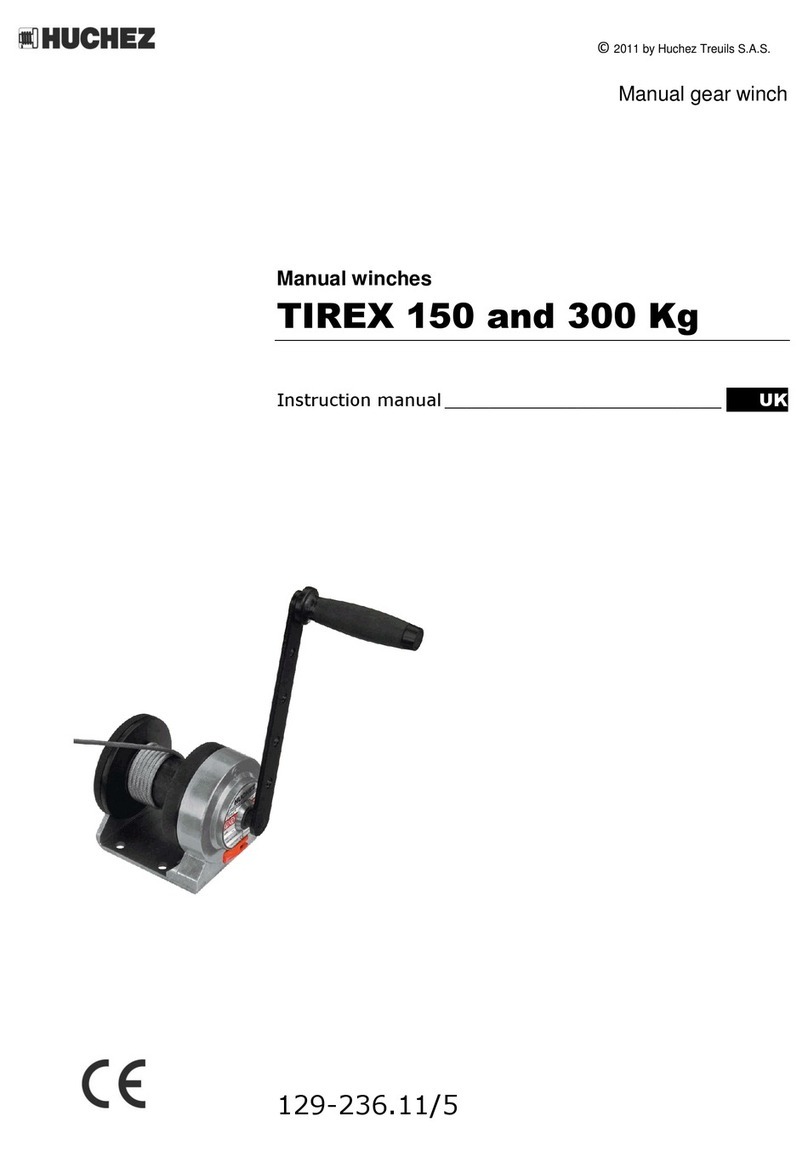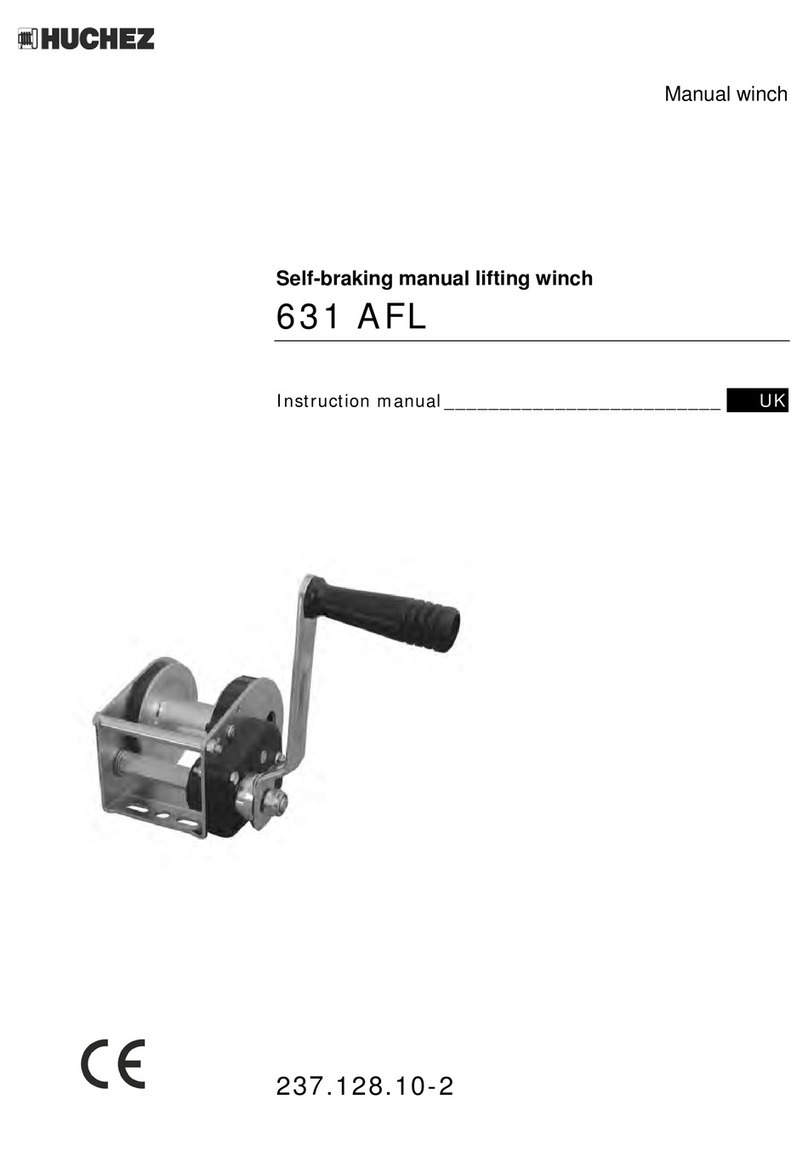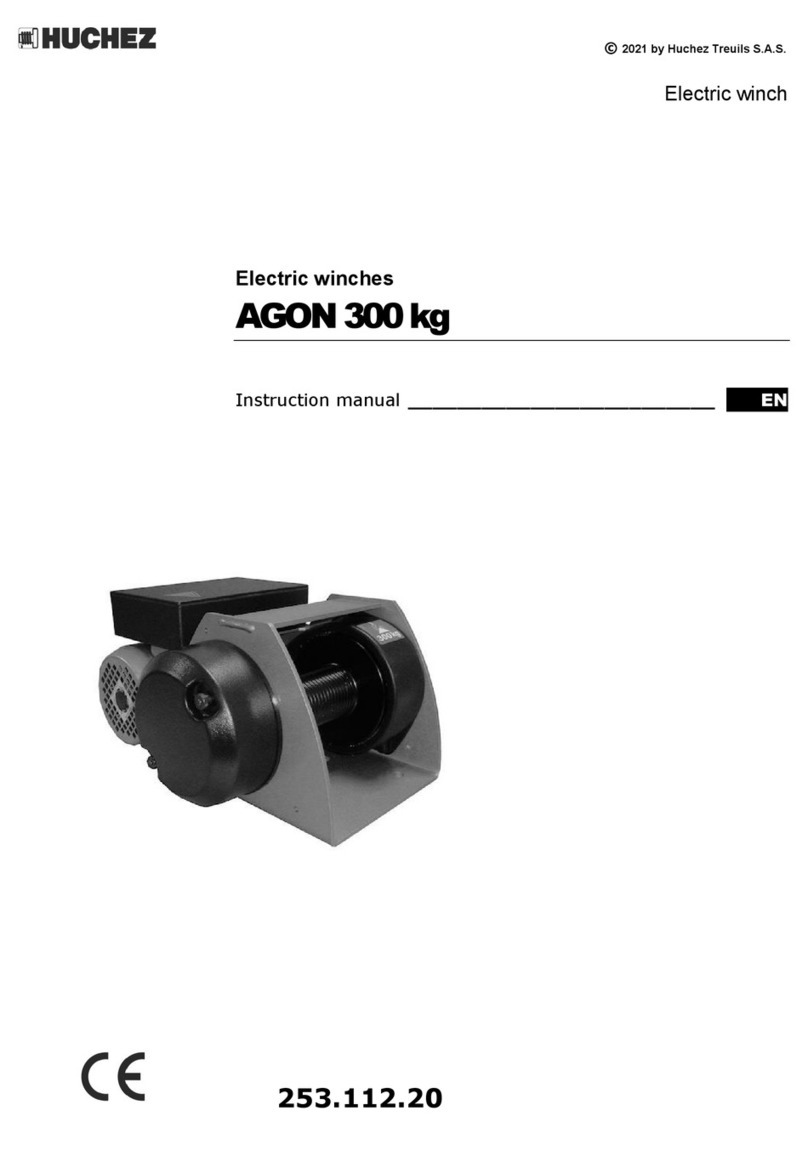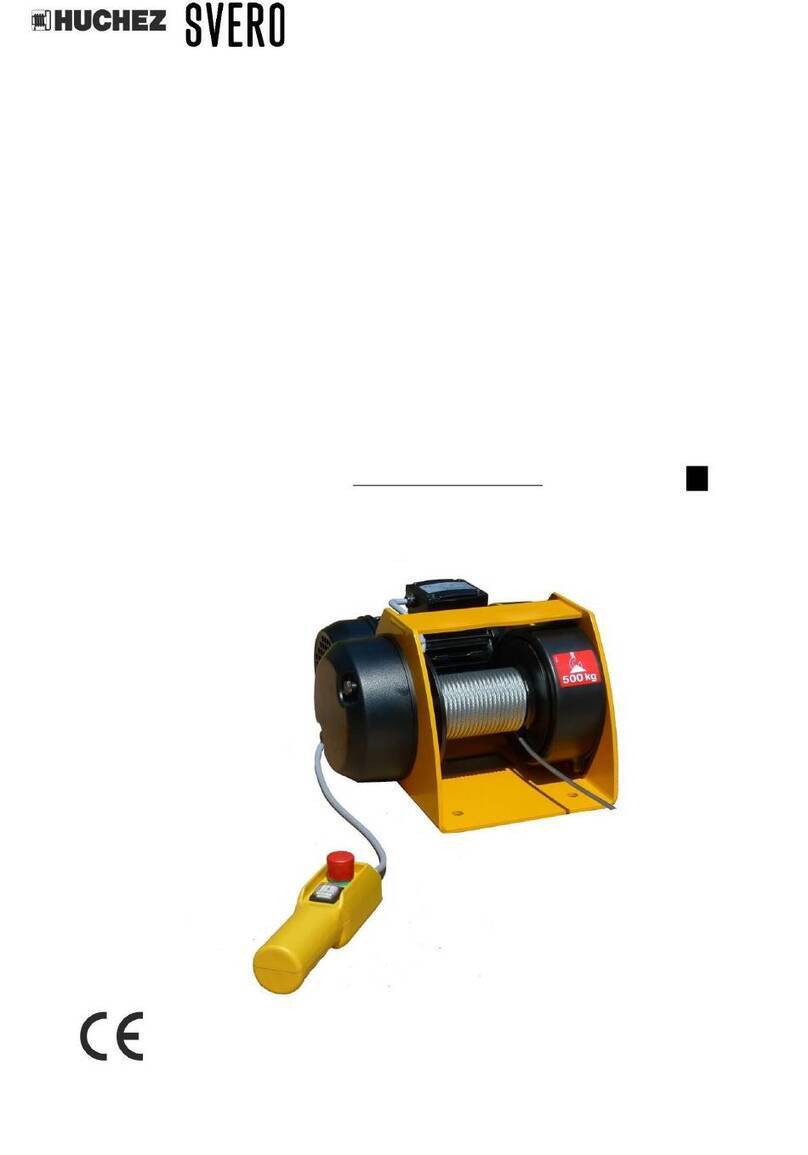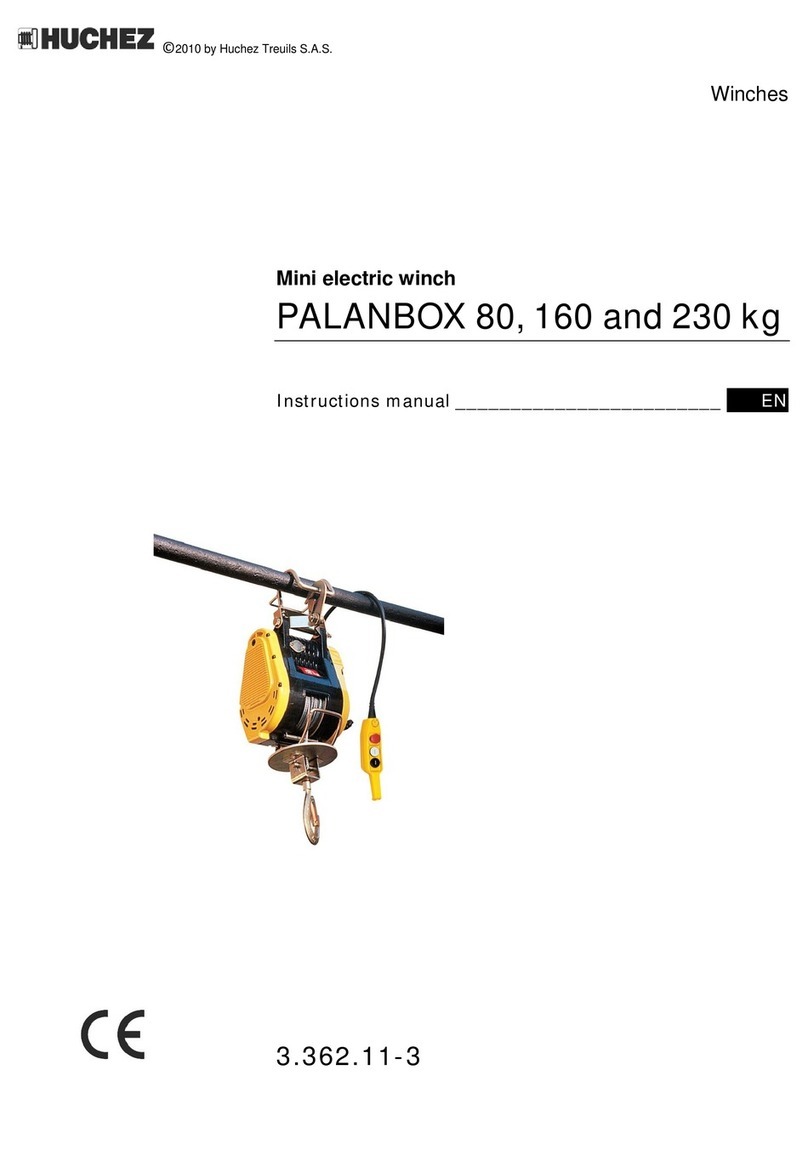
© 2011 by Huchez Treuils S.A.S.
Translation of the original instructions manual 3UK Reproduction prohibited
Before use, the operator must always check that the machine, rope, hook, markings and
moorings are in good working order.
The operator must check that the load is attached in such a way that the winch, the rope and
the load place neither the operator nor any other person in danger.
The winches can be used at ambient temperatures ranging from -10°C to +50°C. Please
consult the manufacturer in the event of extreme conditions of use.
Important: In the event of an ambient temperature below 0°C, the brake must be tested to ensure
that there are no operating faults resulting from the freezing conditions.
Use of winches requires strict compliance with the accident prevention and safety measures in
force in the country.
The data concerning the resistance of the steel rope and its fastenings to heat must be available
on request from the manufacturer and must be respected.
HUCHEZ cannot accept any liability for the consequences resulting from the use or installation of
equipment not provided for in the present instructions or for the consequences of disassembly,
modifications or replacement of original parts or components with parts or components from
other sources without the written agreement of HUCHEZ.
YOU MUST ALSO RESPECT THE REGULATIONS APPLICABLE IN YOUR COUNTRY.
2 –Safety instructions
Before using the equipment, check that there are no causes of overloading such as: adhesion to
the ground, suction, jamming, etc. of the load.
As the operator of the winch, you are responsible for your own safety and the safety of your
colleagues in the work zone of the machine.
The operator must respect all the following safety information, without exception, concerning the
handling and operation of the winch as well as the references to other sections of this instruction
manual. Failure to comply with these instructions increases the level of risk.
Only the people designated by the company are authorised to operate the winch
Before using the winch for the first time, familiarise yourself with its conditions of use. To this
end, read the present instruction manual carefully and in its entirety and perform all the
operations described herein one after the other.
Inform your departmental manager or the safety officer of any malfunction so that the fault
can be repaired immediately.
Respect the directives of the industrial accident prevention organisations such as, in France,
the Caisse d'Assurance Retraite et de la Santé au Travail (C.A.R.S.A.T.) and the Health and
Safety Committee (HSC) of your company, if one exists.
You must scrupulously respect the information in the sections concerning the CONDITIONS OF
USE (below) and the WORK ROPE (page 10)
The operator(s) must have an unimpeded view of the load.
Please ensure that the operator is qualified to operate the machine in the conditions provided
for in this manual. This will ensure the safety of both people and the environment.
Do not lift or transport loads when there are personnel inside the danger zone.
Do not authorise the personnel to walk under a suspended load.
Do not leave a load suspended or with the rope taut unsupervised.
In addition to the above instructions, we must warn you against all incorrect use or handling listed
below. It is dangerous and prohibited to:
unwind the drum completely (retain 2 to 3 residual windings).
pull at an angle.
swing the load.
use ropes with a diameter and texture which do not correspond to the specifications in the
present manual.
use damaged ropes or ropes with splices.
grab or touch a moving rope or a rotating drum.
use hooks without a latch, which do not correspond to the loads indicated on the winch or which
are in poor condition.
insert objects into moving parts.
work on loaded winches or when the rope is taut
use the winch rope as a towing chain.
drum on the control box (overheating of the motor and electrical equipment).
